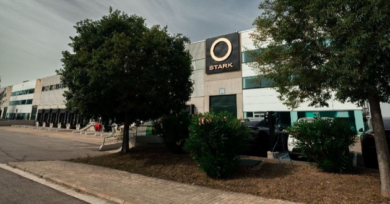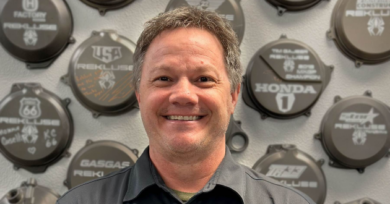Dec. 3, 2007 – Piaggio Group extends its U.S. outlets to auto dealers
By Steve Bauer
Managing editor
Even with its sales expected to increase 25 percent over 2006, Piaggio Group USA is reaching out to a new network to help the company grow even more in 2008: automotive dealers.
In what is still a small and limited experiment, Piaggio has entered into agreements with Ford, General Motors and BMW dealerships across the country to sell Piaggio’s scooters. The company is in negotiations to include more dealerships for 2008 but would not comment on which manufacturers or locales it’s targeting.
Paolo Timoni, president and CEO of Piaggio Group USA, says after a year of testing different dealerships in various markets across the country, the company has decided to stray away from using Arctic Cat dealerships as its sole product distributor. The company is now partnering with several Japanese and European powersports dealerships, along with the automotive dealers, to give Piaggio’s brand broader market appeal.
“At the distribution level, we did a test back in 2006 with 25 Arctic Cat dealers, and it went reasonably well but not enough to justify a particular focus on Arctic Cat dealers only,” Timoni said. “So as we continued to foster our dealer development in 2007. We came to the conclusion that we were better off looking at all the dealers in an existing market, and then case-by-case choose what we thought was the best opportunity. In some cases it was Arctic Cat, in others it was Japanese or European powersports dealers. We are tapping into all opportunities, but we are not continuing with a specific focus just on Arctic Cat.”
When asked why Piaggio had decided to look at other distribution outlets for its product besides Arctic Cat, Timoni said it was a simple case of a specific dealer network’s willingness to embrace the Piaggio brand, along with a brand’s sales appeal in a particular market.
“Arctic Cat dealerships can’t be the most successful in all the markets all the time, and so you cannot really focus on one brand and say, ‘OK, these dealers are going to provide the best opportunity for us regardless of their location,’” he said. “In some cases yes, but in other cases there might be other dealers who are more qualified and more willing to join the Piaggio network. Lucky enough, we have a strong enough demand that we can choose from market to market who we want to go with.”
A unique partnership
Piaggio also has started teaming with a handful but growing number of automotive dealerships that are interested in selling the company’s scooters, including Ford, General Motors and BMW, among others. Although Timoni says the company is experiencing success with auto dealerships, he wouldn’t comment whether Piaggio’s scooters had better sales in import or U.S. dealerships.
“I feel that certainly there is a strong interest on the side of car dealers to look at the scooter market,” Timoni said. “We are testing this now, as the (auto dealer’s) infrastructure is much bigger, not to mention the managerial and financial resources. And during a time when the growth of the overall scooter market has gone down, it’s particularly important to see if it’s because of a lack of demand or if we need to push the marketing to the next level, where we can partner with companies that have greater resources to help promote our product. We’ve had some wonderful experiences with (Ford, GM and BMW) auto dealerships embracing the sale of our brand’s products.”
low displacement
Timoni says Piaggio also is widening its distribution network to help reverse the trend of declining sales in its 50cc scooter sales. Although it’s still early, Timoni says the company is pleased by the results it has seen in 2007.
“The decline in sales of our lower displacement scooters has been a trend that has been in the market now for 3-4 years,” he said. “This year, the decline basically stopped, and we had stable, marginally growing 50cc scooter sales.”
Timoni says even though some of the increased sales can be attributed to the current economic situation, where consumers are looking for cheaper products, he believes the greater amount of exposure of the scooters has been a factor as well.
“For us, more than 70 percent of our sales are in the below 50cc segment, because the focus is more on urban transportation than on delivery or long commute purposes. Also, demand for 50cc scooters is greater in some areas because for example, in states like Massachusetts, you can park on the sidewalk if the scooter is 50cc or less, and in some other key states you don’t need a motorcycle license to ride them. That’s why we felt the need to widen our scope in terms of distribution, to get more consumers aware that there are unique advantages to riding a lower-displacement scooter.”
High hopes for 2008
With the new approach to product distribution and the arrival of several new products from Piaggio, Aprilia and Moto Guzzi, Timoni is optimistic 2008 will be even more successful than ’07.
“For us, the big focus for 2008 will be on marketing the MP3 400 and 500, and the Vespa S 150,” he said. “We believe the MP product has a significant place in the U.S. market, and we will continue to develop and market it.When you consider the market is down 6 percent, we’re
No. 1 in terms of growth in retail sales for European OEMs, far outpacing Ducati and KTM.
“We confirmed our leadership in the scooter market, and we also initiated on a better path in the motorcycle business with Aprilia and Moto Guzzi. And so as we move into 2008, both of these legs of our business will be important and offer great sales opportunities. We talk a lot about scooters, but for companies like Aprilia, this is going to be a very important year with the launch of several new products.”




